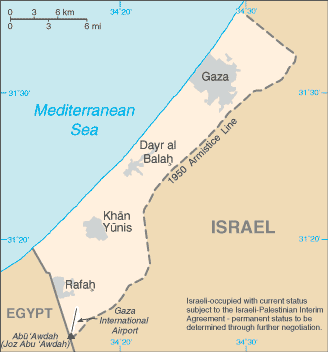On Sunday, three Gazan workers who were collecting rubble to use as building materials were shot and injured by Israeli soldiers. On Sunday morning, Abdallah Rabea Odwan, 45 years old from Beit Lahiiya, was working with many others outside Abu Samra, around 700 meters from the border, when they were fired upon by Israeli soldiers. He was hit once below the knee and taken to the Kamal Udwan Hospital. No bones were broken, and doctors say he will recover over the next few weeks.
In a separate incident, 19 year old Bilal Abdallah al-Daour and 22 year old Ibrahim el-Nabaheen were fired upon whilst working in the Shuja’iyya neighborhood to the east of Gaza city. Hundreds of people were out collecting rocks in the area, about 500 meters from the Israeli border.
At around 8:30am the first shots rang out, but no one was injured. The soldiers stopped shooting and, assuming it was safe, people returned to work. An hour later, the soldiers started shooting again.
Bilal was shot in the knee and Ibrahim was shot in the pelvis. The other workers rushed them to a nearby car, but the car was out of gas due to the shortages caused by the closing of the tunnels under the Egyptian border. Bilal was finally taken to Shifa Hospital in Gaza city. When he was found, he did not know where Ibrahim had been taken.
These are not the first rock collectors shot by the IDF, as countless others have been shot over the last two years in the ever expanding buffer zone. Originally 50 meters under the Oslo agreements, it was expanded to 150 meters in 2000, and then to 300 meters in January 2010.
Despite the 300 meter limit, many of the workers and farmers have been shot by the Israeli army at much greater distances: Adballah was shot 700 meters from the border; others have been shot at up to 2 km from the border – The size of the zone is at the discretion of the Israeli military and they impose the size at differing distances on different days.
The three year long Israeli siege on Gaza has crippled the Gazan economy. Unemployment is widespread, and poverty – combined with the impossibility of importing cement to rebuild the thousands of homes destroyed and damaged during Operation Cast Lead – has pushed people to collect rocks to use as building materials.

